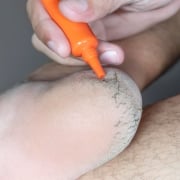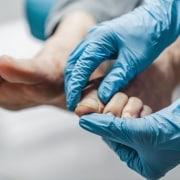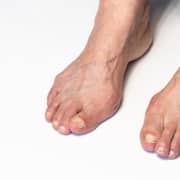3 Ways to Take Care of Your Feet In the New Year
Are you taking good care of your feet? You should be! Taking good care of your feet helps ensure that walking around is as comfortable as possible. There are many small things you can do to take care of your feet. Below are a few things you can do to help ensure that your feet stay healthy in the new year.
1. Wear Shoes that Fit Right
Wearing shoes that don’t quite fit can lead to problems like blisters, infections and ankle injuries in Austin, TX. It’s important to wear shoes that fit right. There are many ways to tell if a shoe fits correctly, and many shoe stores will offer a professional fitting to tell you which size is right for your feet.
As a general rule, if you can slide one finger between your heel and the heel of your shoe, and the fit is snug but not too tight, then the shoe probably fits your feet well. If your feet rub the sides in a way that is painful, you may need extra wide shoes.
2. Wear Clean, Dry Socks
Socks help wick away moisture from your feet and shoes. If your socks are too moist, this can cause fungus growth in your shoes. Change your socks every day, and wear clean, dry socks.
3. Moisturize Your Feet At Night
Feet can develop a layer of rough, dry skin that can crack. To avoid this problem, moisturize your feet at night.
Are you experiencing foot pain? See the foot doctor in Austin, TX. At Dr. Jeffrey Lamour, DPM, PA, we can help you take care of your feet. If you’re experiencing foot pain, call today to make an appointment.








